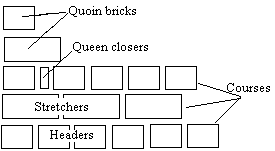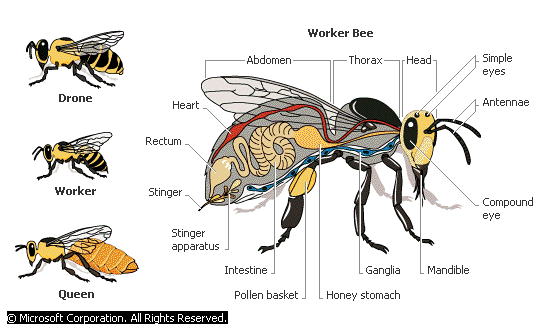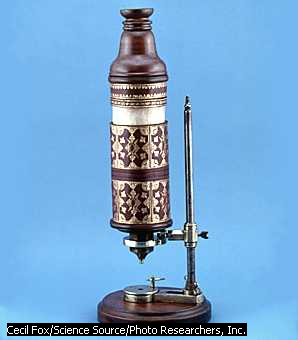
Habitat: The environment in which the plant or animal lives. (Syn. site)
Haga: A height measuring instrument of medium size and weight. It is robust and only moderately expensive. Heights above and below the observer’s eye can be read directly from the scale if the observer is 15, 20, 25 or 30 m from the tree. The appropriate scale can be selected by rotating the selection dial at the front of the instrument. (Pic)
(adsbygoogle = window.adsbygoogle || []).push({});
Hand planting: A reforestation method of planting seedlings by hand, usually with spacing to minimize competition and maximize growth. Seedlings are often 2 years old, giving the new forest a head start overseeding methods
Hand weeding: Removing the undesirable species inhibiting the growth of valued species manually.
Hardening off: Preparing seedlings or rooted cuttings for planting by gradually reducing water, nutrients, or day length, or by increasing light intensity and thus inducing changes in shoots that make them more resistant to exposure to full sunlight, desiccation, cold, etc.
Hard seed: Seed having coats that resist cracking or breaking and may be more or less impermeable to water.
Hard snag: A snag composed primarily of sound wood, generally merchantable.
Hardwood: 1 Trees belonging to the botanical group Angiospermae having broad leaves that, in temperate regions, are usually shed annually. Morus alba, Dalbergia sissoo, are examples of hardwoods. Also, stands of such trees and the wood produced by them. 2. Wood produced by broad-leaved trees, regardless of texture or density 3. A forest type in which 0-25% of the canopy (or of the basal area, in some jurisdictions) is softwood (coniferous). (See softwoods)
Harrowing: See discing
Harvest: Extraction of some type of product from the forest. Generally associated with a cutting
Harvesting: A general term for the removal of produce from the forest for utilization; comprising cutting, sometimes further initial processing (topping and trimming), and extraction.
Haulback line: In cable logging, the line used to pull chokers or the carriage from the landing out to the felling area
Hazard: A risk. An object or situation that has the possibility of injury or damage
 Header: Crosswise brick: a brick or stone positioned crosswise in a wall and level with its outer surface. A header provides transverse strength to the wall. (Pic) (See also stretcher)
Header: Crosswise brick: a brick or stone positioned crosswise in a wall and level with its outer surface. A header provides transverse strength to the wall. (Pic) (See also stretcher)
Headlamp: Firefighters who work on the fireline at night wear these flashlights on the front of their helmets.
Hearting: The interior portion b/w the facing and backing of a wall
Heart rot: Decay characteristically confined to the heartwood. It usually originates in the living tree
Heartwood: Heartwood is the
xylem in the center of the tree that has stopped conducting water and minerals and is storing waste products from the plant. These waste products are of various types. In redwood trees these materials causes the heartwood to turn red. These products help to preserve the wood, particularly in redwoods. Heartwood can be contrasted with
Sapwood, particularly in redwoods, because the heartwood is red and the sapwood is white. The sapwood is the portion of the xylem that is conducting water and minerals and hasn’t started storing waste products. (Pic at Cambium)
(adsbygoogle = window.adsbygoogle || []).push({});
Heel-in: To store young trees before planting by placing them in a trench and covering the roots with soil
Hemolymph: [Late 19th century. < hemo- + Latin lympha “clear liquid”] invertebrate circulatory fluid: a fluid in some invertebrates that functions like the blood in vertebrates
Herbaceous plants: Unlike woody plants, herbaceous plant stems do not add new growth each year. Many herbaceous plants die to the ground in winter, and then grow new stems and leaves in spring, but others stay evergreen. These may steadily increase in size by adding leaves and stems, but the stems do not gain hardness or grow in circumference with each new growing season. Herbs are not all herbaceous plants; some common herbs, such as lavender (Lavandula sp.) and sage (Salvia sp.), are technically shrubs because their woody stems increase in size each year when grown in climates in which they are winter-hardy.
Herbs: This term has two different (and incompatible) definitions. (1) In common usage, herbs are plants used by humans for cooking, medicine, or ritual. Herbs can be
herbaceous plants or
woody plants, annual or perennial,
deciduous or
evergreen. Some trees (such as willow) can be considered herbs under this definition. (2) In the field of botany, the terms “herb” and “herbaceous plant” mean the same thing, and that meaning is listed under the term
herbaceous plants above.
Herbicides: A broad class of chemicals used to kill weeds, grass, brush, or competing trees
Heritability: That portion of the character variance due to hereditary factors as distinct from factors of environment. Heritability is described in one of two ways, depending on the type of investigation. In progeny tests (based on sexually propagated material) it is described as narrow sense and is the ratio of the additive genetic variance to the total (i.e., genetic + environmental = phenotypic) variance of a character; in clonal tests (based on vegetatively propagated material) it is described as broad sense and is the ratio of the total genetic variance to the total (i.e., phenotypic) variance of a character.
Hermaphrodite: Organism that has both sexes: a plant or animal that has both male and female reproductive organs and secondary sexual characteristics
Heteroecious: Requiring two taxonomically different hosts to be able to complete the entire life cycle, as in the rust fungi.
Hibernation: 1. Dormancy resulting from reduced temperatures. 2. Hibernation, state of reduced activity that occurs in some animals during the winter.
High forest: 1. A crop or crops of trees, normally with a closed and high canopy and usually of seedling origin. (IRF modif.) 2. A forest which originated from seed. (Syn: Seedling Forest)
High-forest systems: Silvicultural systems in which the crops are normally of seedling origin, natural and/or artificial, and the rotation is, traditionally at least, long.
(adsbygoogle = window.adsbygoogle || []).push({});
High-forest-with-reserves system: An accessory system in which selected trees of the old crop, scattered or in groups, are retained after regeneration is completed, for the whole or a part of the next rotation.
High grading: The removal from the stand of only the best trees, often resulting in a poor-quality residual stand
High-lead logging: Logging system that uses cables rigged to a spar high above the ground so that one end of the logs can be lifted during yarding.
Hinge wood: In felling, the portion of the tree that remains uncut. The width and location of this wood helps determine which way the tree will fall
Historical land base: The total regenerating area disturbed prior to the base year.
Hog: A machine used to reduce waste pieces of lumber and slabs, or small tree stems, to chip form
Hogging: Reducing wood to coarse chips, for fuel or the manufacture of wood pulp and wood chipboard.
Hole planting: Setting plants in loosened soil replaced in or brought to a dug hole or pit. Roots separated on either side of a wedge or saddle of earth left in situ when the hole was dug is termed saddle planting. In side-hole planting, the trees are set against the side.
Homeoclimactic: Regions that may be miles or continents apart but share similar climates.
Home range: The geographic area to which an animal generally restricts its activities is said to be its Home Range.
Honey Bee, common name for any of several species of highly social bees known for their honey-hoarding behavior and their use as a domesticated species. Members of a Bee Colony: In each honey bee hive, there are thousands of female worker bees, hundreds of male drones, but only a single female queen, who is mother to them all. The queen is larger than the drones and workers, especially her abdomen, in which her ovaries are filled with eggs. A queen may lay as many as 1000 eggs a day. The workers provide nursing support for the larvae as well as hive maintenance. The ovaries of worker bees are shrunken and usually cannot produce eggs. Drones exist solely to mate with the queen to produce new individuals for the colony. After mating drones die. (Pic)
Honeydew: A sweetish excretion produced through the anus by certain insects, notably aphids and scale insects.
Honey fungus or Armillaria: It is a
genus of parasitic fungi that live on trees and woody shrubs.
 Hooke’s microscope: English scientist Robert Hooke built this microscope in the 17th century and used it to conduct pioneering research. He discovered the cell structure of plants by observing a thin slice of cork under his microscope. (Pic)
Hooke’s microscope: English scientist Robert Hooke built this microscope in the 17th century and used it to conduct pioneering research. He discovered the cell structure of plants by observing a thin slice of cork under his microscope. (Pic)
Hot deck: A log pile where both yarding and haul-truck loading take place in rapid succession.
Humus: 1. The plant and animal residues of the soil (litter excluded) that have decomposed to the point where their origin is no longer recognizable. 2. A general term for the more or less decomposed (plant and animal) residues in the soil, litter, therefore, being excluded. 3. More specifically, the more or less stable fraction of decomposed soil organic material, generally amorphous, colloidal, and dark colored.
Humus layer is a general term for the surface layers composed of or dominated by organic material, whether unincorporated or incorporated with mineral soil, or at some intermediate stage
Hybrid: A cross between two species that results in a sterile (but often more desirable) offspring
Hydroseeding: Dissemination of seed hydraulically in a water medium. Mulch, lime, and fertilizer can be incorporated into the sprayed mixture.
Hypanthium: The hypanthium is found only in dicots and is a fusion of the calyx, corolla, and androecium whorls forming a small cup-shaped structure that surrounds the ovary. Ovaries with a hypanthium are called perigynous ovaries because they have the flower parts (calyx, corolla, and androecium) attached to a hypanthium. The base of the hypanthium is typically attached to the receptacle as is the case with the members of the rose family (Rosaceae) and is therefore said to by hypogynous. The hypanthium can also be epigynous, that is, attached to the top of the ovary, as is the case with the fuschia flower.
Hypsometer: An instrument used to measure the heights of trees, employing geometric or trigonometric principles
Hypogynous: Hypogynous ovaries have the flower parts (calyx, corolla, and androecium) attached below the ovary to the receptacle. Hypogynous and superior ovary are synonymous terms. (Pic at Epigynous)
Hypocenter: The calculated location of the focus of an earthquake.
Hypoplasia: It is underdevelopment or incomplete development of a tissue or organ.
Hurrie: It refers to a compact plantation of Kikar (Acacia nilotica) derived from Sindi word.
(adsbygoogle = window.adsbygoogle || []).push({});
Hydrosphere: (from Greek hydor, “water” and sphaira, “sphere”) in physical geography describes the combined mass of water found on, under, and over the surface of a planet. The total mass of the Earth’s hydrosphere is about 1.4 × 1018 tonnes, which is about 0.023% of the Earth’s total mass. About 20 × 1012 tones of this is in the Earth’s atmosphere (the volume of one tonne of water is approximately 1 cubic metre). Approximately 71% of the Earth’s surface, an area of some 361 million square kilometres (139.5 million square miles), is covered by ocean.
Hysterothecium: A sexual fruiting structure of the Ascomycete fungi, usually football-shaped or elongate in appearance and occurring on infected needles.
———-
Corrections and Suggestions are most welcome. Please use the comment section for feedback. If you see any missing terminology or any updated one or any latest term please use the comment section for the purpose. Also, if you have any image or data related to any above terminologies, don’t forget to mail me at tulaib_javid@yahoo.com.
Regards
Naeem Javid Muhammad Hassani
Header: Crosswise brick: a brick or stone positioned crosswise in a wall and level with its outer surface. A header provides transverse strength to the wall. (Pic) (See also stretcher)
Hooke’s microscope: English scientist Robert Hooke built this microscope in the 17th century and used it to conduct pioneering research. He discovered the cell structure of plants by observing a thin slice of cork under his microscope. (Pic)




Hammer mark